I hear a lot of people in my photography classes and workshops say they want to upgrade to a full frame camera. It seems to be the ultimate goal for many photographers, but why is that? Are you really clear on exactly what are the differences between full frame and a crop sensor camera?
In this article, I’ll demonstrate the difference using side-by-side image examples and try and dispel some of the most common misconceptions about why crop sensor cameras aren’t as good.
What is full frame?
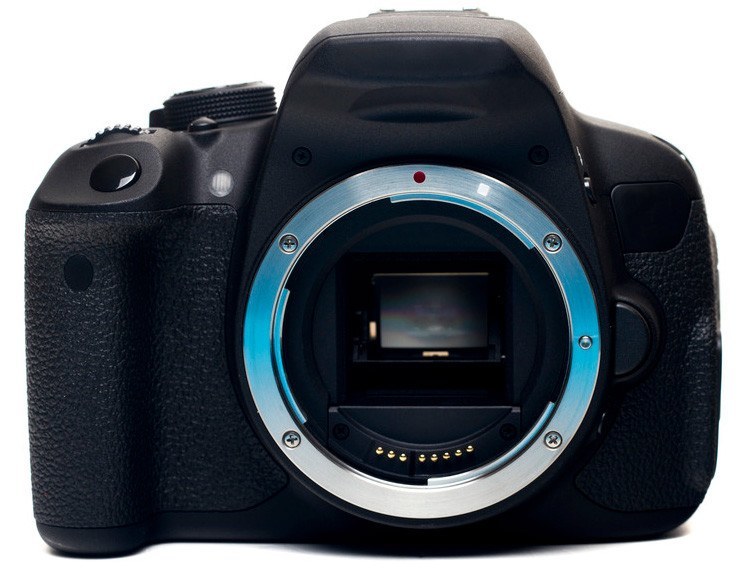
I’ll start with explaining full frame because I think it’s easier to grasp the concept.
Back in the film days, there were many sizes of cameras and coincidentally different sizes of film. 35mm cameras became the standard for hobbyists and even some pros towards the end of the 90s (I even used 35mm at weddings for black and white low light work).
The size of a frame of 35mm film is 24x36mm (the name 35mm comes from the width of the actual film strip including the sprocket holes). But that actual image area of 24x36mm is the same size as the digital sensor inside full frame cameras.
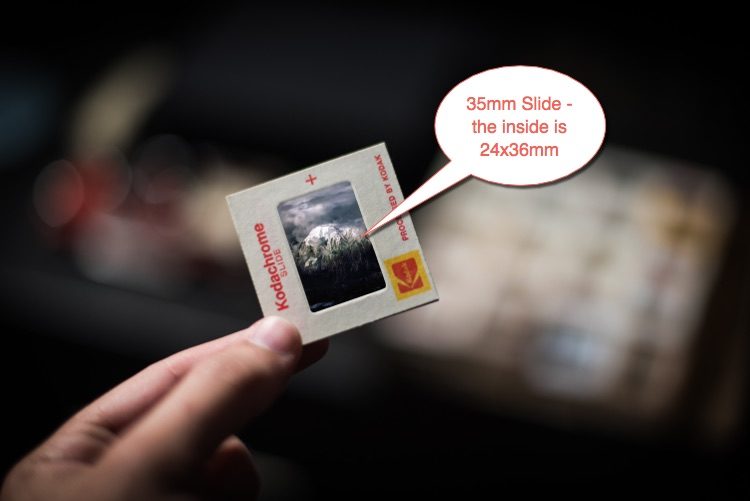
What that means
So what that means for your application in the digital world is that any lenses you used on your old 35mm film cameras will work and behave the same on a full frame digital camera (if the mount is the same).
But they will not work the same on a crop sensor camera (APS-C), though, because of something called covering power and crop factor.
I’ll explain that a bit later in the article, keep reading.
Why aren’t all digital cameras full frame?
The short answer here is cost.
The first digital cameras had much smaller sensors and a lot lower resolution (image quality). As the technology advanced, manufacturers were able to make larger sensors, ones that replicated the 35mm size and which had increased image quality.
I bought the first Canon full frame body, the 5D Classic (it was just called the 5D then) in my city back in 2006. It cost me about $4000 CAD (about $3150 USD) which was a lot at the time! More than you’d pay for a full frame digital camera now even (the Canon 6D II is under $2000 USD).
That’s also a lot more than the Canon 30D which was released a few months after the original 5D. The 30D at 8 megapixels compared to the 5D which was 13, are both small by comparison to today’s DSLRs.
So while prices have gone down in some areas of digital photography, you can still expect to pay quite a bit more for a full frame than a crop sensor camera. Read my article: 7 Questions to Ask Before You Upgrade to a Full Frame Camera Body to help you decide if you should spend the extra money on full frame or not.
What is crop sensor then?
You may have seen a chart like this before, yes?
It shows the relative sizes of the most common digital crop sensor sizes. For purposes of this article, we’re comparing the largest (35mm or full frame) to the next size down (APS-C or crop sensor).
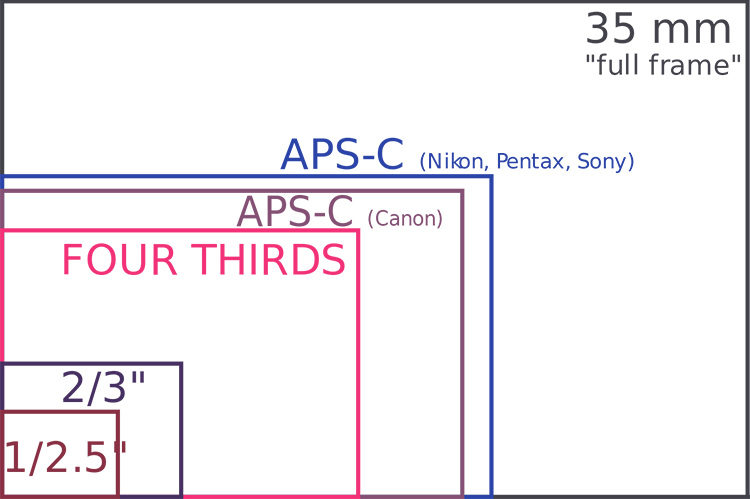
Let’s see how that applies in the real world.
Look at the image below which shows the sizing grid above, overlaid on top of the image area of the Kodachrome slide. Notice how much smaller APS-C is compared to full frame.
The smallest on the chart represents the size of a common smartphone camera sensor. So when people say their phone can take photos that are just as good quality as your DSLR, show them this!
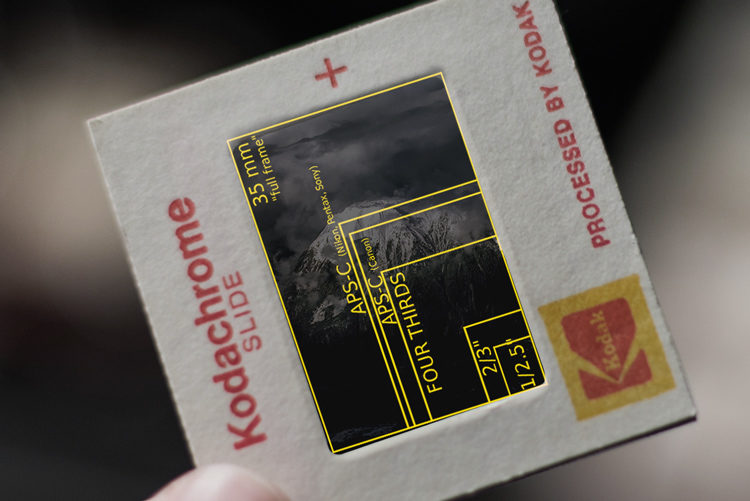
So sometimes size does matter.
But does that mean that your crop sensor camera is no good? Are the images that you create with your Canon EOS Rebel, Nikon D5500, or Sony a6500 always going to be inferior? No – let’s take a closer look.
Side-by-side comparison
Crop Sensor Camera vs Full Frame
In order to demonstrate the differences between full frame and crop sensor cameras (APS-C), I did a little shoot with the cameras side by side using the same lenses.
Often, I find the biggest confusion most people have is around understanding the crop factor, and what the heck that really means.
Same distance – same lens
Full Frame vs Crop Sensor Camera Example Photos
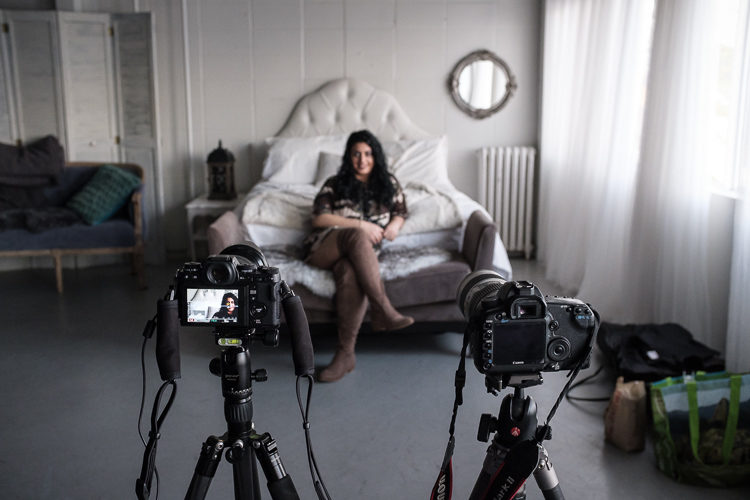
This series of images was shot with both cameras the same distance from the subject, using the same lens. Let’s look at how they compare.
The cameras used for this experiment were my Fuji X-T1 (APS-C or crop sensor) and a Canon 5D Mark II (full frame) I borrowed from a friend because I have now sold ALL my Canon gear!
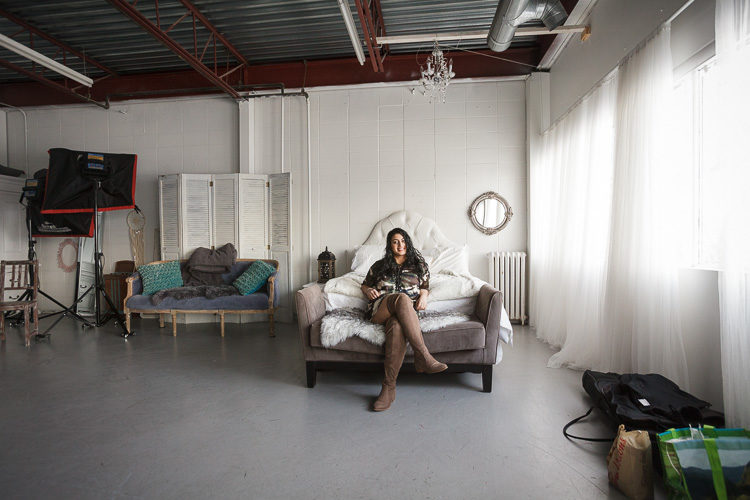
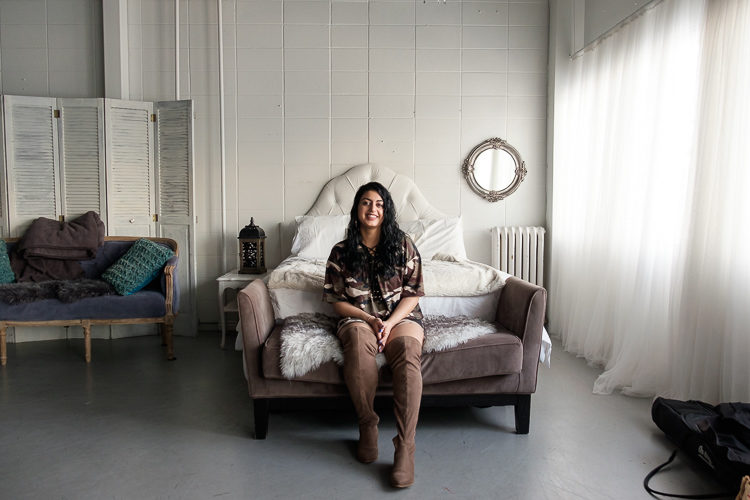
Wow – what do notice about the two images above?
The one shot with the Canon shows a lot more of the room and the model seems a lot farther away, right?
So, you can see that an 18mm focal length lens on a full frame camera captures a lot wider field of view than does an 18mm lens on a crop sensor body.
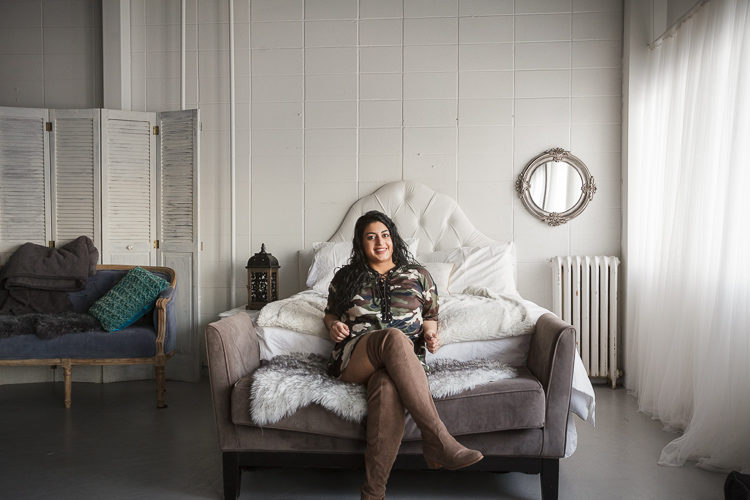
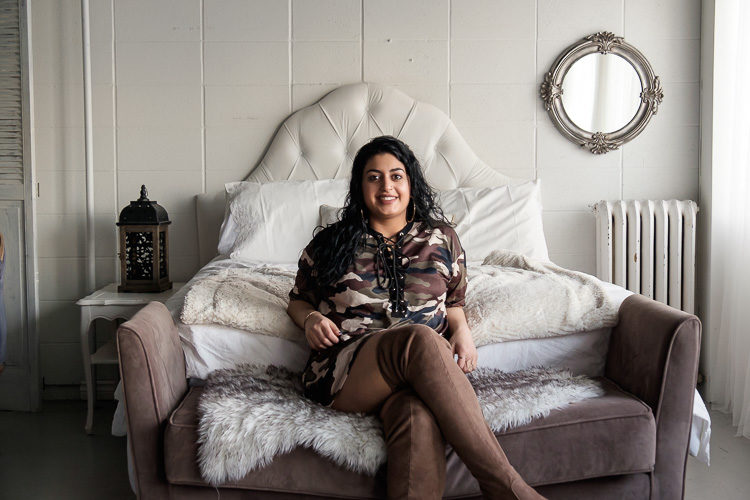
Once again using roughly a 35mm focal length produced very different images with the different cameras, as seen above.


Finally, above you can see less of a difference between the two images shot at 135mm on both cameras.
Crop factor
Crop sensor cameras or APS-C cameras have smaller sensors, and the resulting image magnification is called the crop factor – as you can see in action in the images above.
It varies by manufacturer (Canon is 1.6x and Nikon is 1.5x), but we’ll use 1.5 as an example here.
Imagine I took the image shot with an 18mm lens on the full frame camera, then zoomed in on it and cropped part of the image out. Making it roughly 1.5x bigger (like the crop factor) should result in a similar image as that from the APS-C (crop) camera and 18mm lens. Or does it?
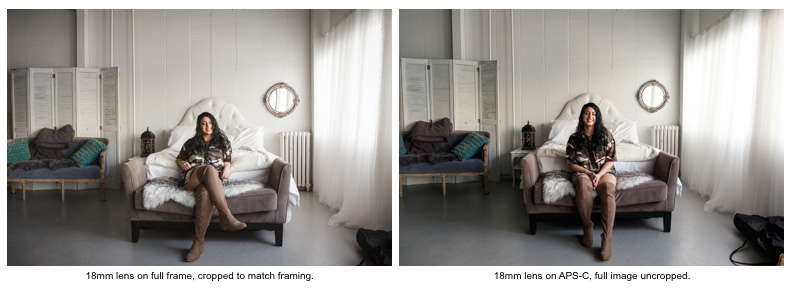
Taking that a step further, you may often hear that the crop factor of 1.5x is kind of like multiplying the focal length by that factor.
But it is and it isn’t.
What it actually means is that the sensor is that much smaller than one which is full frame.
For example, full frame is 24x36mm. Nikon’s crop factor is 1.5x so by doing the math on that we can figure out that Nikon’s APS-C sensors are roughly 16x24mm. As Canon’s is 1.6 their sensors are roughly 15×22.5mm. These are approximations using just the math, not actual dimensions.
But that math does NOT apply to lens focal length which does not change regardless of which camera the lens is mounted to. A 50mm lens will always be a 50mm lens because the focal length is defined as the distance from the center of the lens (middle of the glass elements) to the imaging sensor or film plane. That does not change no matter what camera you use.
Lens covering power
What does change, is how much of the image that the lens is projecting into the camera is actually captured. Remember I mentioned something called covering power before? This is where it comes into play.
let me explain.
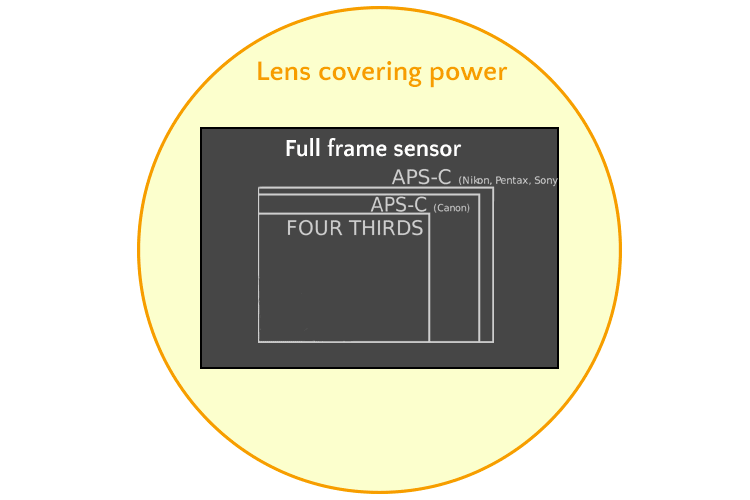
Okay, what you see above is a representation of how the light coming through your lens applies to each of the different sized sensors.
As your lens is circular, the image produced by it is also a circle. Your camera captures a rectangular portion of that circular image. Notice how much less of the whole image the smaller APS-C sensors actually capture.
Any lenses that are compatible with full frame cameras must produce a circle or light larger than the sensor, otherwise, you’d get image cut-off.
That is why lenses made especially for crop sensor bodies (called Dx lenses by Nikon) will NOT work on a full frame camera. This will happen if it were attempted (but they usually won’t fit on the mount anyway).
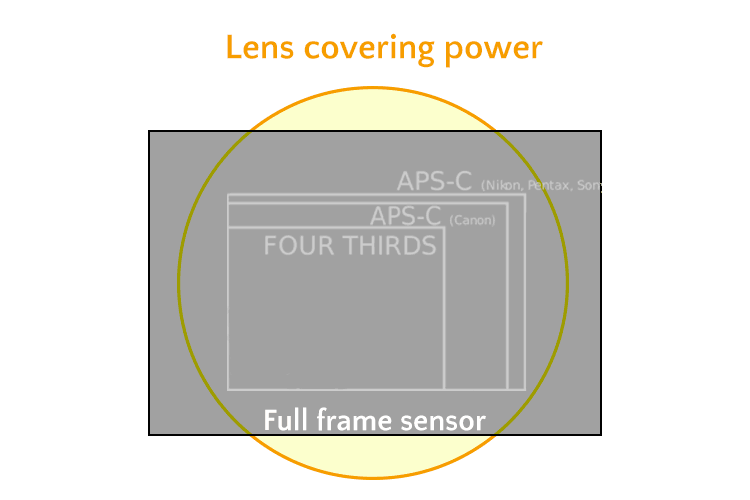
How this all applies to you
Okay so now you know, and hopefully understand some of the science going on behind the sensor size issue. But you may be asking some of the following questions:
- How does this apply to me? Is one better than the other?
- Can I still get the same and good photos with a crop sensor camera?
- What happens to my lenses if I upgrade from crop sensor camera to a full frame camera? Will they still work?
The short answer here is that yes you can still take great photos with an APS-C or crop sensor camera.
You just have to think and work a little differently.
Same lens – different distance to the subject
Let’s look at another example.
This time I set up both cameras with the same focal length lens but adjusted the distance to the subject (the Fuji had to be moved back) to keep the model the same size in the frame.
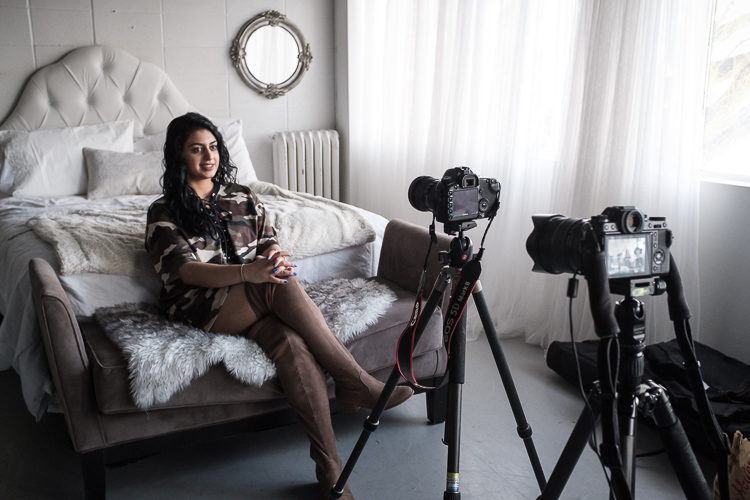
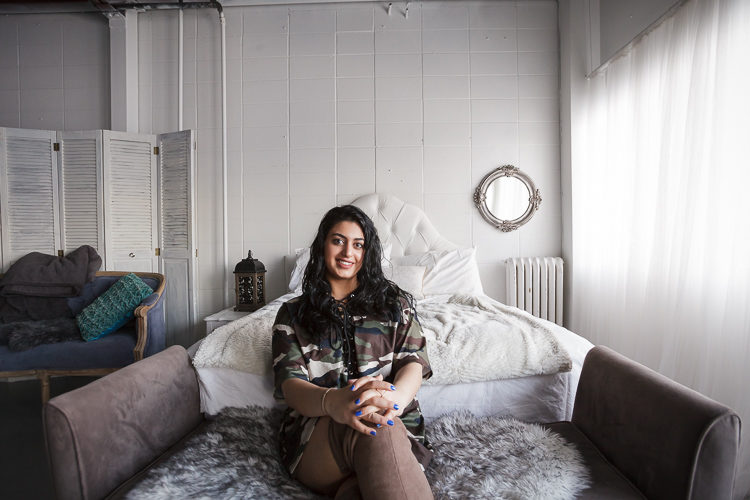
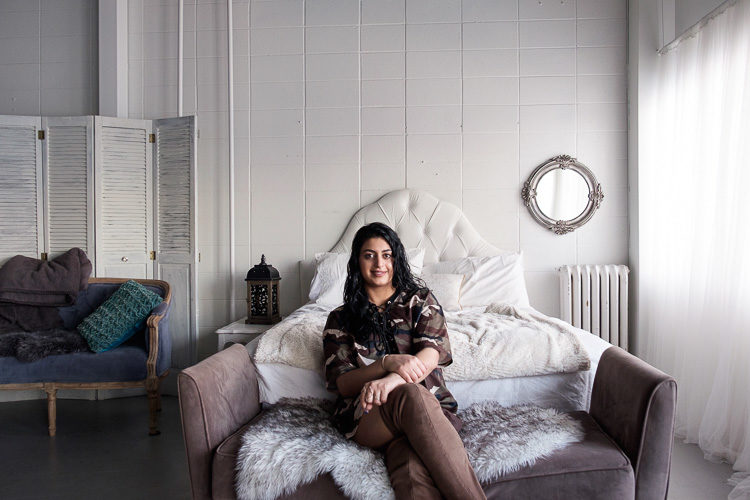
What do you notice about the two images above? Do you see any major differences? I do!
Look at the bench she’s sitting on. In the image shot with the Canon, it looks distorted and the arms are exaggerated. Likewise the girl’s hands look a lot bigger than her face in that image than they do in the one shot with the Fuji. Why is that if they were both shot with an 18mm lens? You tell me – what did I change?
The distance between the camera and the subject changed the perspective!
The only thing I changed was that I moved back to get the shot with the Fuji camera.
Because of the crop factor, the Fuji sees less of the scene so I had to move back to keep her roughly the same size.
Camera to subject distance affects perspective – the closer you are, the more distortion you will get.
So you can learn something else as a side bonus lesson here – being closer to your subject will add more distortion to the subject, especially on the edges of your image.
With an 18mm lens, your angle of view is the same regardless of the camera used. But you can’t see the edges of the image in the crop sensor because well, the image has already been cropped in-camera.
So if I were in the same spot as the Canon I’d have gotten the same distortion on the Fuji shot, but not the same framing. Does that make sense?

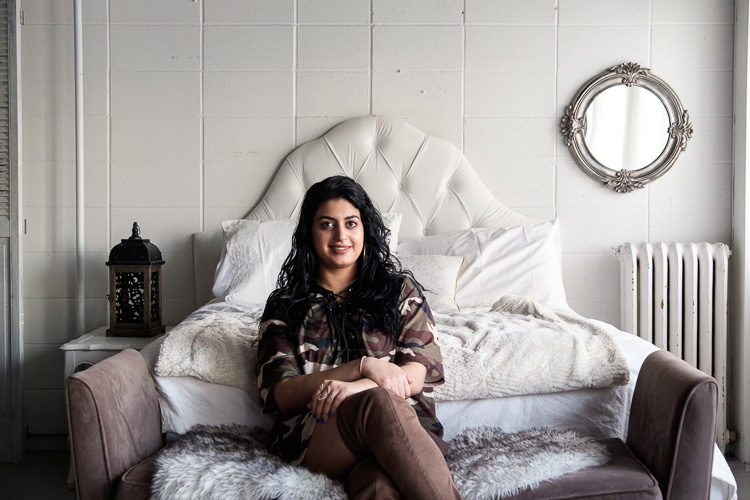
The two images above look more similar because I was farther away from the subject for both, and the 35mm lens doesn’t create as much distortion. But I see a few subtle differences. See if you can spot them.
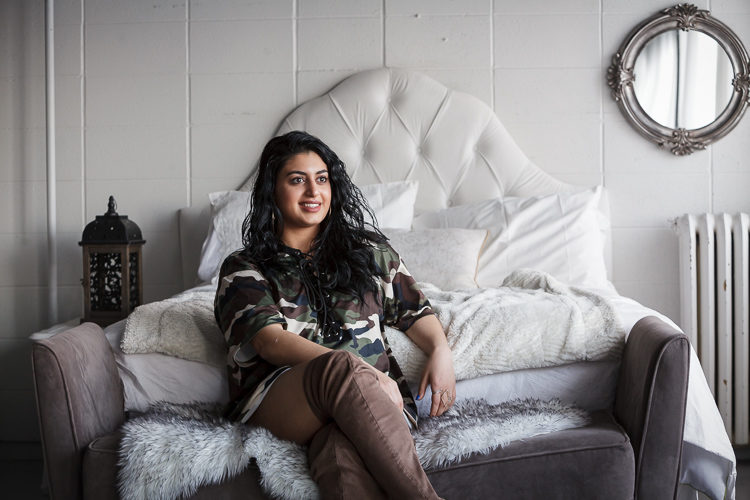
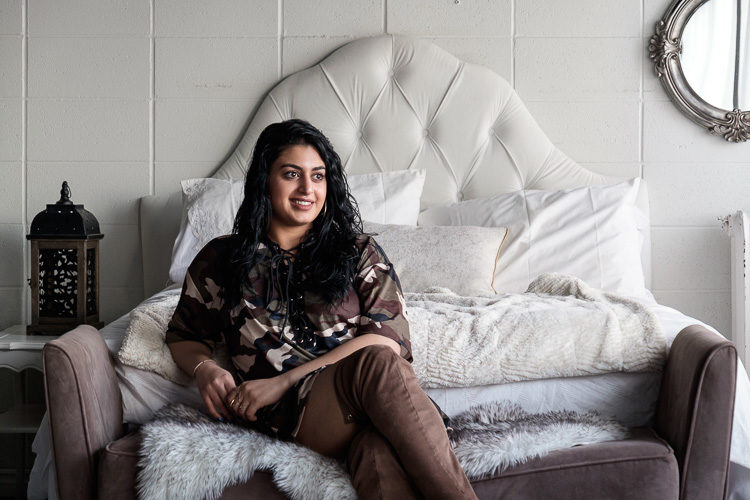
Pretty close!
I tried to keep the girl the same size in the frame and using a 70mm lens for both was able to get shots that are very similar. Again I do notice some small differences, like a slightly shallower depth of field in the image shot with the Canon – so let’s look at that in more detail.
Depth of field
The depth of field differences between full frame and crop sensor camera is a complicated issue.
I won’t go into the science of it here, but suffice to know that you can get a slightly better shallow depth of field and the much coveted “bokeh” when shooting full frame.
But . . . having said that, personally, I think it’s marginal.
Unless you’re shooting at f/1.2 for paid jobs that demand it – you’ll likely be fine using a crop sensor camera and its bokeh.
Same distance and aperture – different focal length
My final set of images were shot to show this difference.
I placed my tripods side-by-side and used a 50mm f/1.8 lens on the Canon and my 35mm f/1.4 on the Fuji. I selected f/2 for both to maintain consistency in the aperture for this test.
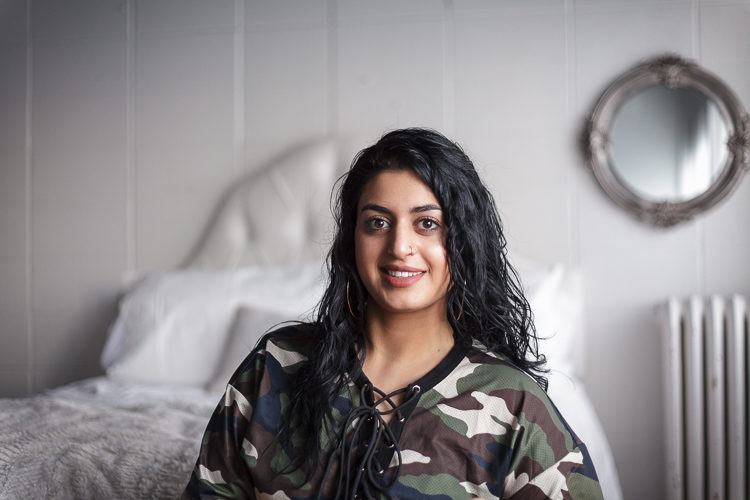
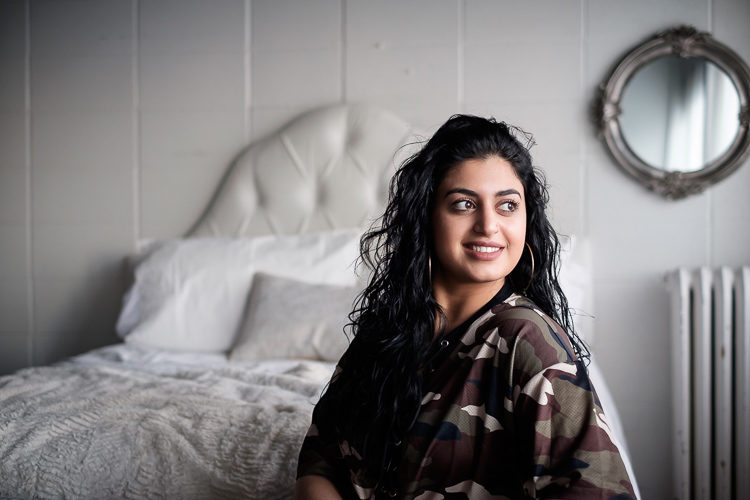
Can you see the difference? Yes, the background in the Canon image is slightly more of out of focus. Take particular note of the imperfections on the wall that are almost invisible in the Canon shot but are clearly showing in the Fuji image.
But is that enough to send you running to the camera store to upgrade? I would suggest you hold off on that because there are things you can do to get a similar look to the Canon image.
- You could use a bit longer lens on the Fuji and back up a bit.
- Move the model away from the background a few more feet.
- Use a larger aperture if you have that option on your lens. (Hint: Invest in better lenses before you upgrade your camera body!)
There are three factors that affect depth of field and how blurry your background is in your image. I’ve pretty much named them above, but if you missed it they are:
- Focal length (because using a longer lens will make you get farther from the subject, thus affecting depth of field)
- The distance between the subject and the background
- Aperture

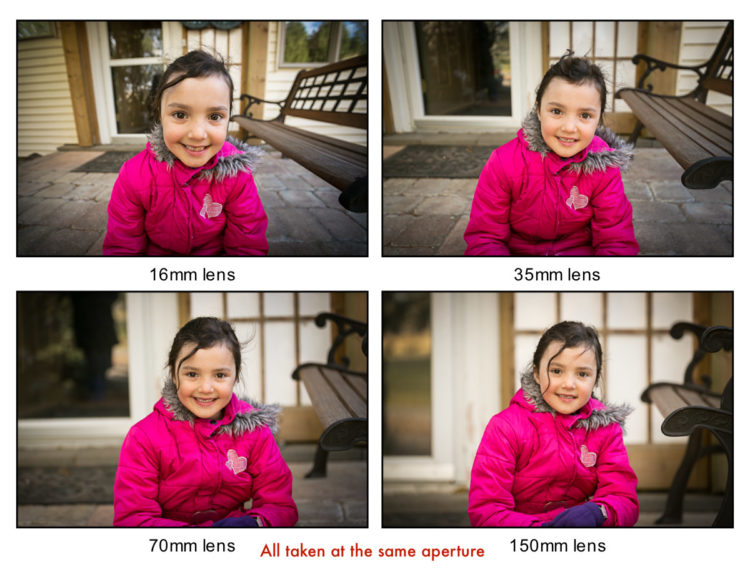
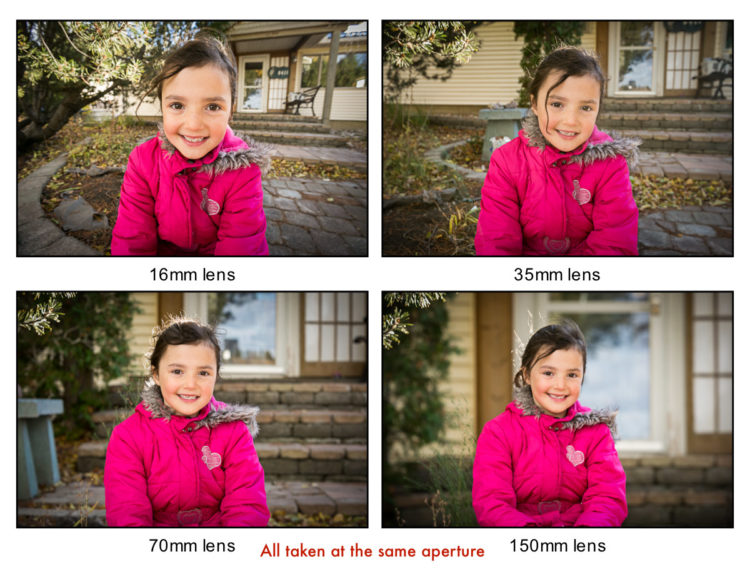
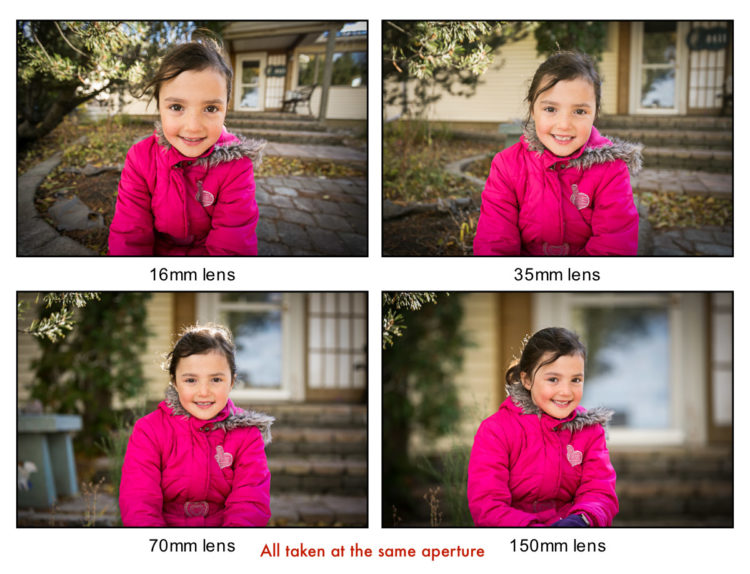
So it’s not just a large aperture that will give you the creamy bokeh you so desire – all three of those factors must be taken into consideration.
No matter if you use full frame, shoot at f/1.2, and use a long lens – if you put your model a foot from the background you will NEVER get it out of focus. Period!
Which brings me to some things that a lot of people get wrong or misunderstand when it comes to sensor size.
3 Common misconceptions about sensor size
- A 50mm lens on a crop sensor camera is the same as 75mm on a full frame body – FALSE!
- You can only use lenses specifically made for crop sensor on those camera bodies. Ones made for full frame won’t work – FALSE!
- A 35mm lens made for crop sensor is wider than a 35mm lens made for full frame – FALSE!
I hope that after reading this article you can see why these misconceptions about sensor size are all incorrect.
A 50mm lens on a crop sensor is not the same as a 75mm lens on FF because the lens optics of those two focal lengths are different. You will get something similar to using a 75mm lens on FF but the angle of view and amount of distortion is still that of a 50mm lens.
Yes, you can put full frame (Nikon Fx) lenses onto crop sensor bodies. They will work, but the view you see is not the same – as we saw in the examples above.
But, you can NOT put a lens made specifically for crop sensor (Nikon Dx) cameras onto a full frame body. They do not have enough covering power, and often the lens mount is different as well.
No, a 35mm lens isn’t any wider on one camera than another.
The 35mm represents the focal length which is the distance from the middle of the lens to your sensor. The angle of view doesn’t change either. The only thing that does change is how much of that image is captured by the sensor.
This article on full frame vs crop sensor cameras really helps explain the differenceClick To Tweet
If you have any other questions about sensor size and what it means for you, please post them in the comments area below.
If you’re not sure if you need a full frame camera still – go read 7 Questions to Ask Before You Upgrade to a Full Frame Camera Body if you haven’t already and hopefully you can answer your own questions on that topic.
Cheers,